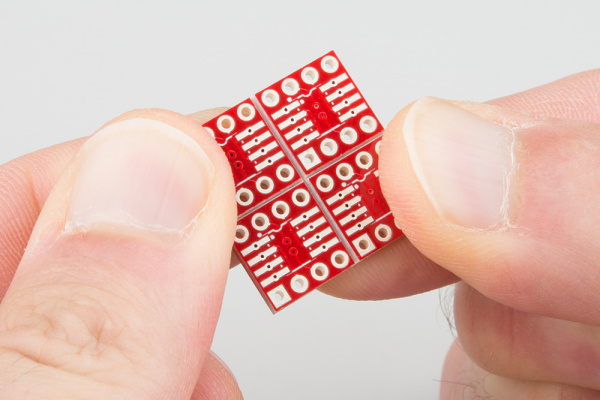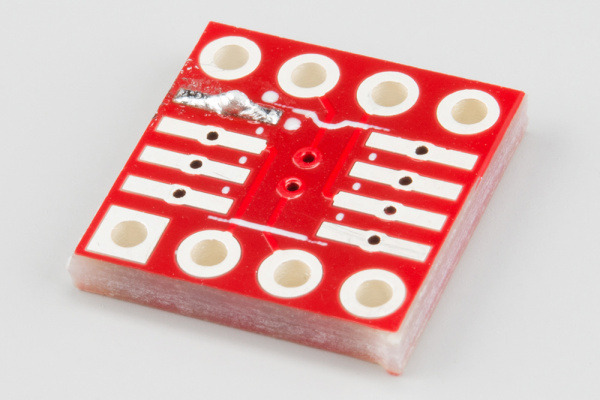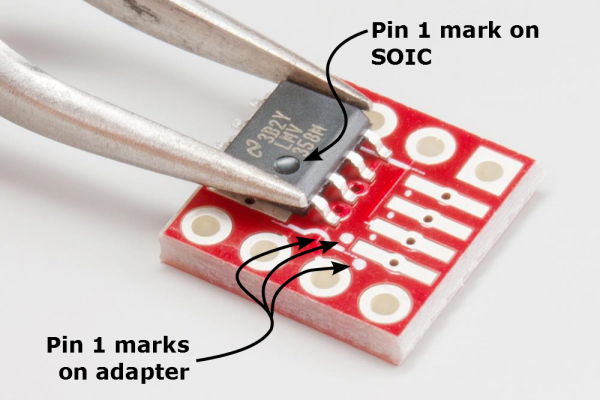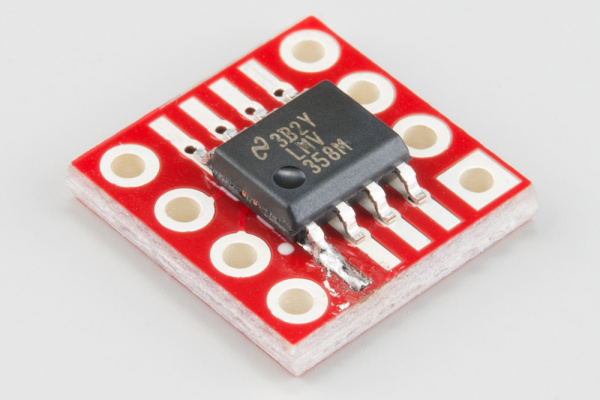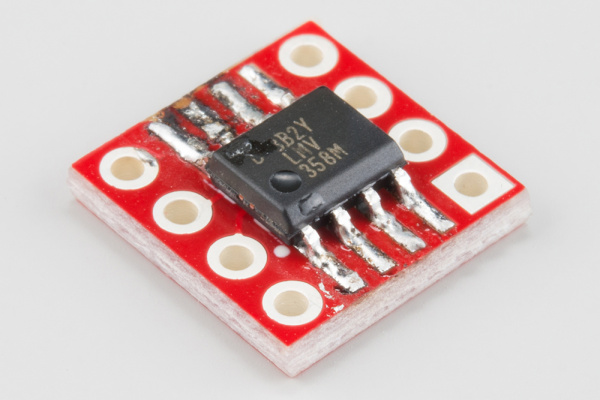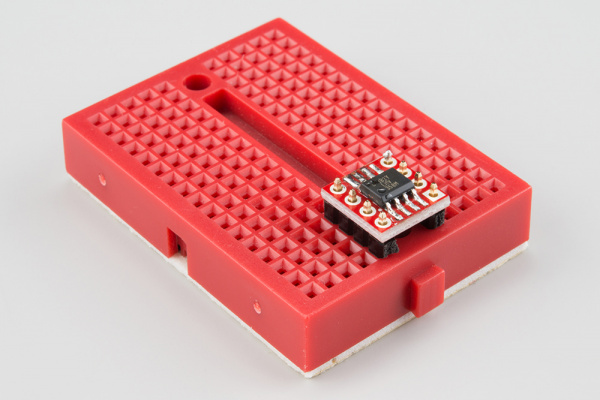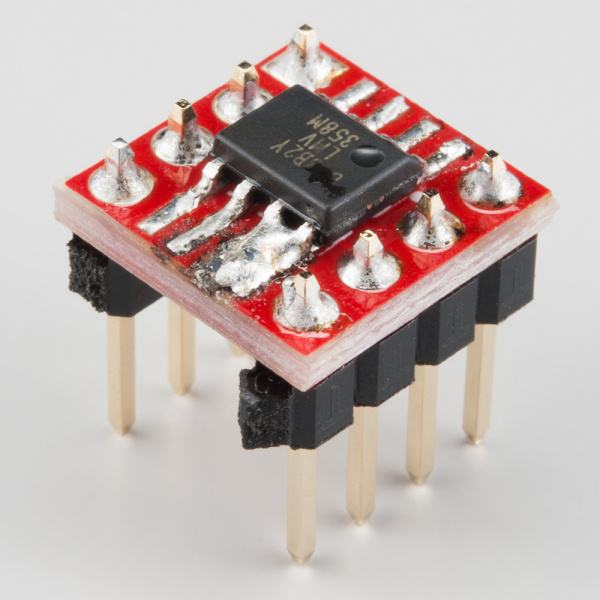8-Pin SOIC to DIP Adapter Hookup Guide
Assembly
Assembling the adapter is fairly straightforward, but there are a couple of tricks that make it easier.
Materials
To build up an adapter, you'll need the following pieces.
- A SOIC-8 integrated circuit to adapt.
- The 8-pin SOIC to DIP adapter board.
- Some break away male headers.
- Some solder, either leaded or lead-free.
Tools
The following tools are also recommended.
- A soldering iron with a fine-point tip.
- A magnifying glass or loupe.
- Cross-lock tweezers.
- A solderless breadboard, to use as an assembly jig.
Building An Adapter
Snap Boards Apart
The array of boards was scored when it was manufactured. If you bend along the scores, the boards snap apart easily.
Prepare To Solder
It's easiest to solder the IC in place before you mount the headers, so you don't have to work around the protruding pins.
If this is your first time soldering surface mount ICs, patience and a steady hand are the key to good solder joints.
- Neatness Counts -- you want to put on enough solder to join the legs to the pads, but not so much that adjacent legs are accidentally bridged.
- Work Quickly -- if you leave the hot soldering iron on the board too long, you risk burning the traces and pads off the board. You want the iron at a temperature where the solder flows almost immediately when you apply it to the iron. Somewhat counter-intuitively, a hotter iron can be less damaging than a cooler one -- having the iron at a hotter temperature allows you to work more quickly, reducing the potential for damage.
Solder IC In Place
First, heat one corner land (aka pad) on the PCB.
Once it's hot, flow a little solder onto it.
Pin 1 of the IC is usually marked with a small dimple in the IC body, or that end of the chip is marked with a notch. Line these marks up with the corresponding marks in the silkscreen. The silkscreen actually has three marks, a notch at one end of the IC, a dot within the IC outline, and a dot just outside the IC (which remains visible once the IC is soldered down).
Grab the IC with the tweezers, and orient it over the footprint. Reheat the solder blob from the previous step, so the IC lead adheres to it. Press the IC down flat before the solder cools.
At this point, it doesn't have to be a perfect solder fillet, but the IC should be sitting flat on the board, and all of the leads should align with the PCB pads. If the alignment isn't good, or if pin one is the wrong way around, reheat the solder, and adjust the placement. This becomes a lot harder to fix after more pads get soldered down.
With the chip properly aligned, you can work your way around the chip, soldering each lead. It works best if you use the tip of the soldering iron to heat the IC lead and the PCB land at the same time, then flow a tiny bit of solder to join them.
When you get back to the first lead, you can reheat the joint, flow a little more solder, and make sure the leave a neat fillet.
Solder In Header Pins
With the IC in place, now you can solder on the header pins. It's easier if you have a jig that can hold the pins while you solder. It turns out that a solderless breadboard has a bunch of holes with the proper alignment!
Start by breaking off the 4-pin segments off the header. Insert them into the breadboard, two rows apart.
Set the PCB over the headers. Take care to keep the pins aligned straight up and down.
Work your way around the PCB, soldering each pin from the top of the board. When it's complete, it should look like the board below.
Deflux
Once you've finished soldering, look at the solder joints. If they appear to have a yellow or brown coating on or around them, the board has flux residue (under a magnifying glass, it might look like burnt sugar). Water soluble flux is acidic, and can cause problems with long-term reliability, so it's best to clean it off.
You'll have to check the documentation for your solder for the proper cleaning methodology. Some flux is water soluble, while some requires a solvent like isopropyl alcohol or acetone.
Verify
Before we jump into applications of the SOIC-to-DIP adapter board, let's take a moment to doublecheck our work.
A quick visual inspection can help spot solder bridges, or solder joints that didn't flow properly. It's also a good time for one last check, to make certain that pin one of the SOIC is properly oriented.
For a little extra confidence, you can also use a multimeter in continuity mode, to verify that the legs of the SOIC are connected to the pins.
